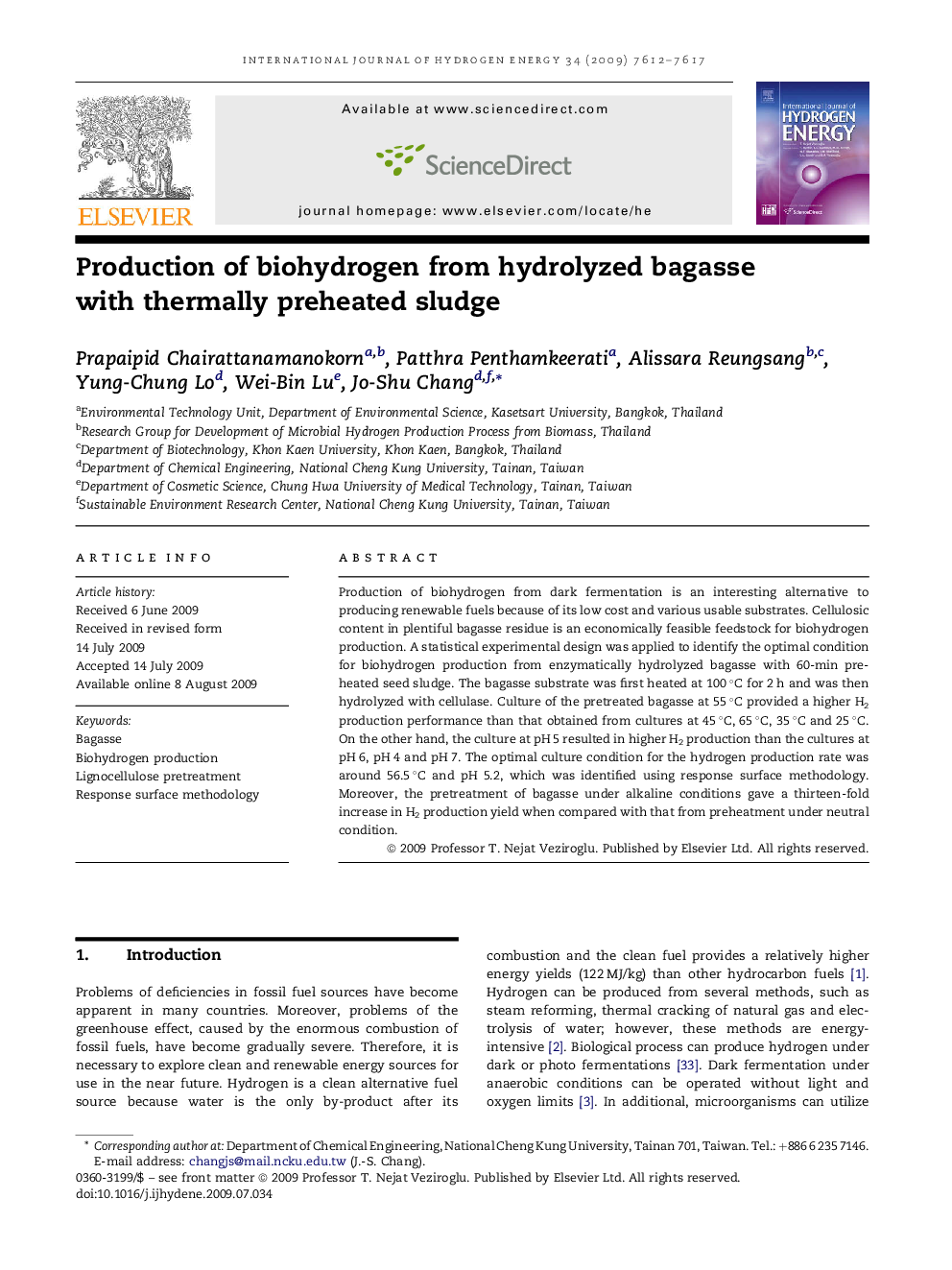| Article ID | Journal | Published Year | Pages | File Type |
|---|---|---|---|---|
| 1277402 | International Journal of Hydrogen Energy | 2009 | 6 Pages |
Production of biohydrogen from dark fermentation is an interesting alternative to producing renewable fuels because of its low cost and various usable substrates. Cellulosic content in plentiful bagasse residue is an economically feasible feedstock for biohydrogen production. A statistical experimental design was applied to identify the optimal condition for biohydrogen production from enzymatically hydrolyzed bagasse with 60-min preheated seed sludge. The bagasse substrate was first heated at 100 °C for 2 h and was then hydrolyzed with cellulase. Culture of the pretreated bagasse at 55 °C provided a higher H2 production performance than that obtained from cultures at 45 °C, 65 °C, 35 °C and 25 °C. On the other hand, the culture at pH 5 resulted in higher H2 production than the cultures at pH 6, pH 4 and pH 7. The optimal culture condition for the hydrogen production rate was around 56.5 °C and pH 5.2, which was identified using response surface methodology. Moreover, the pretreatment of bagasse under alkaline conditions gave a thirteen-fold increase in H2 production yield when compared with that from preheatment under neutral condition.
